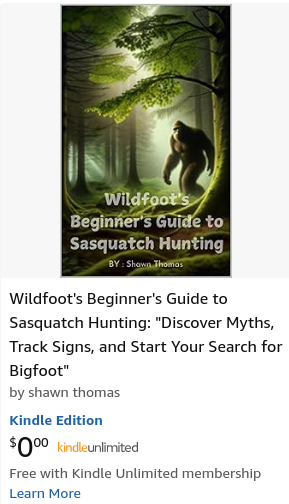
The Psychology Of Bigfoot Believers And Skeptics have you ever wondered if the tales of a towering, hairy creature wandering the forests of North America were true? Guess what? They are – at least in the hearts and tales of many. The legend of Bigfoot, also known as Sasquatch, isn’t a modern fabrication. It has remarkably deep roots. The first newspaper story about a Bigfoot sighting was published way back on July 3, 1882, in the British Columbia Daily Colonist. But that’s not where the story starts, it traces even further back.
The Native American populations of the Pacific Northwest have been telling stories about enormous, shadowy beings for centuries. Bigfoot was and, in many cultures, still is, a notable character in indigenous narratives. These stories chronicle giants that dwell in the mountains and forests, salient figures that often straddle the line between the natural and supernatural worlds. They’re not merely folklore; they’re intrinsic parts of cultural heritage.
Taking this further, let’s dive into Native American folklore, where Bigfoot’s presence is far from benign curiosity. According to traditional tales, an encounter with Sasquatch could induce ‘soul-loss sickness’, unconsciousness, or even an upset stomach. Talk about a memorable meet-and-greet! Yet, with time, these stories have evolved, with some tales casting the creature in a friendlier, or at least a less-threatening light. These enduring tales have woven Bigfoot indelibly into the cultural and spiritual fabric of these communities.
At this point, I’m going to clue you into an often-overlooked tidbit: the very name ‘Sasquatch’. It comes from ‘sasq-ets tel’, a word from the Sts’ailes people, an Indigenous group residing in British Columbia, who have been around the Harrison River Valley for over 10,000 years. For them, spotting a Sasquatch isn’t a cause for alarm; it’s considered good luck. This magnificent being even holds a place of honor on the Sts’ailes nation’s flag.
The initial fascination with Bigfoot can be seen as a tapestry, a melding of indigenous reverence and modern-day curiosity. It sets the stage for contrasting views and heated debates on Bigfoot’s existence. So this brings the question, amidst these woven stories of cultural significance and spiritual belief, what do critics and skeptics have to say? There’s a lot to unpack there, and that’s going to include examining the often-touted proofs of Bigfoot’s existence and the scientific community’s reaction to such evidence – or the stark lack thereof.

Disclosure
Hey there! Just wanted to give you a heads up – all the links I share on this site are my Amazon Associates Affiliate links. I’m passionate about writing about Bigfoot and promoting awesome books with Kindle Unlimited. You’ll also find Bigfoot research gear, useful tips, and intriguing questions about Bigfoot because it’s all about the adventure with top-notch knowledge and equipment.
So, what does this mean for you? If you click on one of these links and make a purchase through it, I may earn a small commission as an Amazon Associate. It’s a way for me to earn a little something for the time and effort I put into creating content for this helpful guide to the history of Bigfoot sightings. But don’t worry, I always strive to provide honest and helpful recommendations, regardless of any potential earnings.
Transparency is important to me, so feel free to reach out if you have any questions or concerns about this disclosure. Thanks for being a part of this community!
Shawn Thomas
Owner of Wild-Foot Myths Hope you enjoy the Blog!
What percentage of people believe in Bigfoot?
According to a recent CivicScience survey conducted in mid-July, 13% of U.S. adults expressed agreement with the statement, “Bigfoot/Sasquatch is a real, living creature.” This marks an increase from the 11% who shared the same belief in May 2020, representing an 18% rise. Interestingly, belief in conspiracy theories has shown a notable increase across the board over the past two years.
Skeptics’ Perspective: Analyzing the Lack of Concrete Evidence

You’re probably wondering about the evidence that backs up the existence of Bigfoot, or rather, the lack of it. Scientists, with good reason, are sticklers for hard proof, and this is exactly where the Bigfoot narrative starts to get shaky.
Many of the accounts involving this elusive creature rely on anecdotal evidence, such as eyewitness stories or grainy photographs and videos. But here’s the snag: none of these provide the clear, testable evidence that science demands.
Critics argue that in the age of smartphones and trail cameras, concrete proof like a DNA sample or a living specimen should have surfaced by now if Bigfoot were real. Misidentifications of known wildlife, outright hoaxes, and even honest mistakes are frequently offered as explanations for reported sightings.
Explore
Top Trail Cameras
When exploring in the wild, a trail camera can be your most valuable tool for capturing evidence of Bigfoot.
SPYPOINT
ORDER HERE→
GRADEPRO A35
ORDER NOW→
Why do some people not believe in Bigfoot?
Currently, there is no conclusive evidence to support the existence of Bigfoot. While some individuals may reference purported video and audio recordings of the Sasquatch, these do not constitute scientific proof of the creature’s existence. Furthermore, scientists raise concerns regarding the absence of tangible evidence, such as DNA samples or captured specimens.
Moreover, the psychological phenomenon called pareidolia – where the mind interprets vague stimuli as something familiar, such as seeing faces in clouds or hearing hidden messages in music – may also be at play, causing people to ‘see’ a Sasquatch where there isn’t one.
Despite these skepticisms, one can’t help but ponder why, in the absence of hard evidence, the belief in Bigfoot persists. This leads us beautifully into the psychology behind the belief in cryptids like Bigfoot, which we’ll explore in the next section.
The Believers’ Stance: A Psychological Understanding

You might be wondering why, in the face of scientific skepticism, the belief in Bigfoot persists. I’m going to shed some light on that. Belief is a powerful tool, and Bigfoot believers have a rich tapestry of reasons for their conviction that this elusive creature roams the forests of North America.
At the heart of the believers’ stance is a combination of psychological factors. For starters, humans are drawn to mysteries and the thrill of the hunt. The idea of discovering something new, especially a creature as awe-inspiring as Bigfoot, is quite seductive. It ties into our desire to explore the unknown and make sense of the world around us.
Explore Wildfoot Myths Book!!
Unlock the Secrets of Sasquatch Hunting—Your Beginner’s Adventure Awaits!
This guide isn’t just about finding Sasquatch—it’s about sparking a sense of adventure and connecting with the untamed wilderness. Whether you’re planning a weekend expedition or just looking for an intriguing read, Wildfoot’s Beginner’s Guide to Sasquatch Hunting is packed with everything you need to get started.
Step into the unknown. Find the tools, the stories, and the inspiration to begin your Sasquatch-hunting adventure today.
Get your copy now and let the search begin!
Cultural stories and personal accounts significantly influence people’s beliefs. From generation to generation, stories of the Sasquatch have been passed down, and these stories do more than just entertain; they become part of a cultural identity, reinforcing the idea that such creatures exist.
Moreover, first-hand accounts and testimonies, despite the lack of scientific evidence, create a powerful narrative. When someone claims to have seen Bigfoot, it can have a profound effect on the listener, often compelling them to believe as well.
Community building is another key aspect. Those who believe in Bigfoot often find camaraderie with like-minded individuals. They share stories, go on hunts, and participate in discussions that deepen their commitment to their belief. It’s not just about finding Bigfoot; it’s also about the community and sense of belonging that comes with the search.
I believe it’s important to acknowledge the role of evidence interpretation. Believers often point to the collection of footprints, grainy videos, and eyewitness reports as sufficient proof. In their view, such evidence validates their beliefs, despite scientific demands for more concrete, testable data.
Believing in Bigfoot also taps into a deeper aspect of our psychology: the resistance to categorize the creature as purely mythological. The human mind is adept at holding onto the ‘maybe’, the possibility that amidst the lack of concrete evidence, there’s a chance we simply haven’t found what we’re looking for yet.
The Bigfoot Enigma: Why the Mystery Endures

You’re going to find out about the tenacity of human curiosity when it comes to the enigma that is Bigfoot. Uncertainty and the alluring veil of the unknown have cemented Sasquatch as a figure of intense psychological appeal. This compels generations to maintain their pursuits despite a lack of concrete evidence. I’m here to help you understand why the legend of Bigfoot, against all odds, persists in the realms of popular culture as well as scientific curiosity.
A lot is happening very quickly in the fields of cryptozoology and folklore studies. Researchers are constantly challenged to reexamine traditional notions of what’s possible in our natural world. In my opinion, it’s the interplay of hope, imagination, and the intrinsic human inclination towards exploration that fuels the continuous discussion around Bigfoot’s existence.
Additionally, the Bigfoot saga isn’t just about chasing shadows in the woods; it has tangible effects on local economies through tourism and merchandising. Annual gatherings, exhibitions, and themed activities offer a showcase of how myth can transition into a means of livelihood for many.
In conclusion, Bigfoot stands as a shared narrative that resonates deeply with our desire for wonderment. Despite scientific skepticism, this creature of lore pirouettes on the boundary of possible and mythical, reminding us that there are always aspects of our world just beyond the reach of our understanding. It’s a story that invites us to look beyond what we know — and in that invitation lies the enduring power of the Bigfoot legend.

Bigfoot Research Equipment Toolkit
Enhance your Bigfoot hunting experience with our exclusive Bigfoot Hunting Toolkit. Equipped with the essential tools needed for a successful research hunt, this toolkit will elevate your expedition to new heights. Don’t miss out on this opportunity to enhance your Bigfoot research journey. Order your Bigfoot Hunting Toolkit today.




The well-organized form of the article results in a tidy introduction, body, and conclusion. The author uses engaging language and a conversational tone. The website features a tranquil design influenced by nature, with a sizable picture of a forest at the top of the page. The navigation of this website is straightforward and user-friendly, with many categories and tags for enhanced research.-
Hi thanks for the great comment. I’m super stoked that you enjoy my site so much. feel free to follow a long I’m putting new peice out weekly
thanks again
Bigfoot believers can be quite rare in my opinion, unless I go to North America. personally I. do believe that Bigfoot myths is about respecting the environment, and also about hunting a creature. As you said very justly, humans are thrilled by the excitement of the chase. And also, I do believe that it’s always a good thing to have a mind with such a mythical being…
Hi Anglce903
thank you for you great comment. Yes Believers can be rare but I’m sure thier are a lot of people around you that feel the same way you do as thier are lots of big community’s around the world . I to am a believer in Bigfoot very much enjoy the story’s that are out there. my honest belief is that people wont believe till we have a dead one and to be honest I hope we never get to that point and mankind can just stay on the chase.
bigfoot to me is one of the great things out there that it bring so many people together in harmony. and that truly great in my books
thanks for the great comment